We protect sea turtles
on Boa Vista (Cabo Verde)
Five species of sea turtles roam the waters around the Islands of Cabo Verde: Green turtles (Chelonia mydas), Leatherback turtles (Dermochelys coriacea), Olive Ridley turtles (Lepidochelys olivacea), Hawksbill turtles (Eretmochelys imbricata), and Loggerhead turtles (Caretta caretta). Only the loggerhead turtle nests regularly on the islands.
World’s third largest population of loggerhead turtles
The local nesting population of loggerhead sea turtles is the third largest population in the world after the nesting populations of Oman and Southeast Florida, and is the largest nesting population in the Eastern Atlantic. It is estimated that around two thirds of the nesting activity on Cape Verde occurs on the Island of Boa Vista.
Threats to loggerhead turtles
Although the legal situation on Cape Verde officially places all sea turtles under protection, they are exposed to numerous threats. Poaching of the nesting animals is still a major threat. Adult female sea turtles come ashore every two to three years to build their nests. In total, they lay between six and ten nests per season. In addition, the increasing destruction of their nesting beaches is threatening the survival of the population. Whether it’s hotel complexes that are ruthlessly built on their favourite beaches and whose brightly lit facilities cause light pollution and thus irritate the hatchlings, streams of tourist groups or massive accumulations of rubbish on land and in the sea – the list seems endless. But there are also dangers at sea, such as death as bycatch in industrial fishing or fatal collisions with ships or boats.
The Turtle Foundation steps up to the plate
We and our local sister organisation Fundação Tartaruga have been running the conservation project on Boa Vista since 2008. Thanks to consistent night patrols on the beaches, the number of poached animals has been reduced enormously. In the first year alone, the number of animals killed on Porto Ferreira beach fell from 600 (2007) to 60.
Project location
Overview
Start of program: 2008
Species in focus: Loggerhead sea turtle
Location: Boa Vista, Cape Verde
Projects
Patrolling the beach with rangers and international volunteers
During the loggerhead turtle nesting season from June to October, we carry out patrols on five beaches where we run seasonal beach camps. These are located in the north (Boa Esperança), north-east (Canto, Cruz do Morto) and south (Curral Velho, Lacação) of the island.
The rangers, field and camp coordinators have been supported by national and international volunteers on beach patrols since 2009.
During the night, the nesting beaches of the loggerhead turtle are monitored over a total length of 42 kilometres. This presence is intended to deter poachers from approaching the nesting animals. If a female is encountered, our teams can also record biometric data and relocate threatened nests to a guarded hatchery set up for this purpose.
We have also been supporting a community-based conservation project called Projeto Bofareira for many years, which patrols a one-kilometre-long nesting beach in the north of the island.
On the poachers’ trail: Dog and Drone Team
As the highly endangered population of loggerhead turtles is still hunted for their meat in Cape Verde, we launched a unique project in 2018. The dog and drone project was developed in close cooperation with local nature conservation authorities and the police and has since been implemented by our Cape Verdean sister Fundação Tartaruga along a total length of 66 kilometres of beach.
Success for conservation dogs and night-vision drones
The targeted targeting of nesting beaches by a qualified team of rangers equipped with night vision devices and conservation dogs has led to a massive reduction in poaching on the coasts of Boa Vista since its introduction. Dogs trained in so-called mantrailing, which are trained to follow scent trails, have shown their deterrent effect together with the presence of night-vision drones. This has recently become very clear in a 5-year balance sheet: while 865 females were killed in 2017, the number fell to 275 the following year and has continued to fall ever since.
Advantages of the modern strategy in turtle protection
Dogs have a highly developed sense of smell, which enables them to detect hidden objects and follow scent trails over long distances. It is not only this characteristic that makes them the ideal complement to humans when searching for poachers at night. In fact, objects left behind at the scene of the crime, such as knives, can be used to pick up the scent. In addition to the conservation dogs, we have opted for modern night vision technology that is controlled by drones. This allows attacks to be thwarted in advance, as it increases the possible surveillance radius many times over. All of this helps us to pass on suitable evidence to the local authorities for further prosecution.
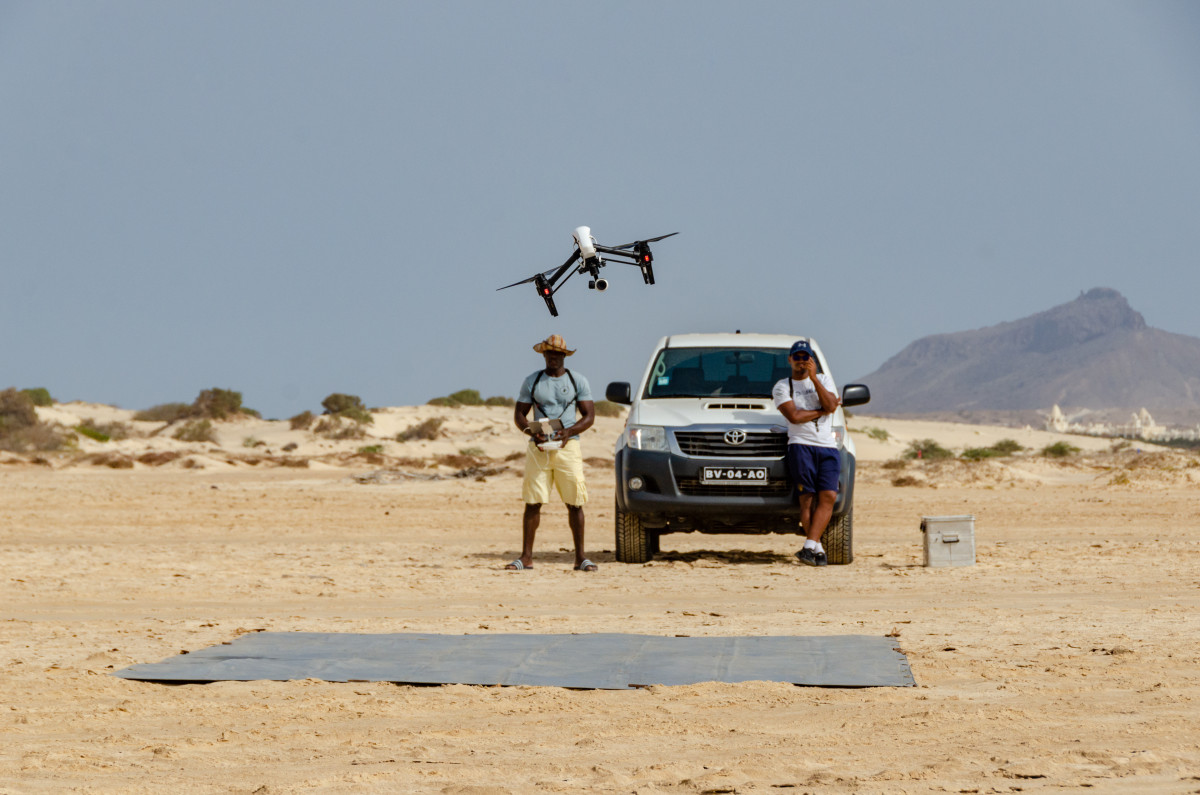
Flight training with the night vision drone
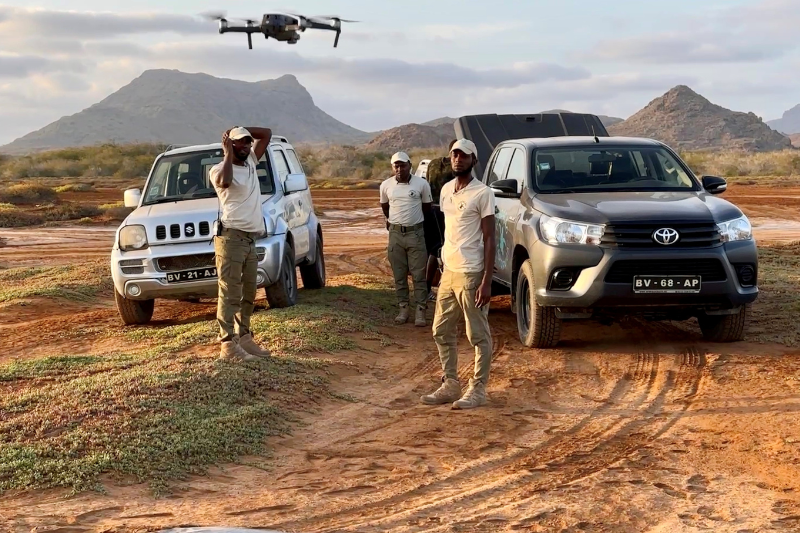
Daytime training with the night vision drone
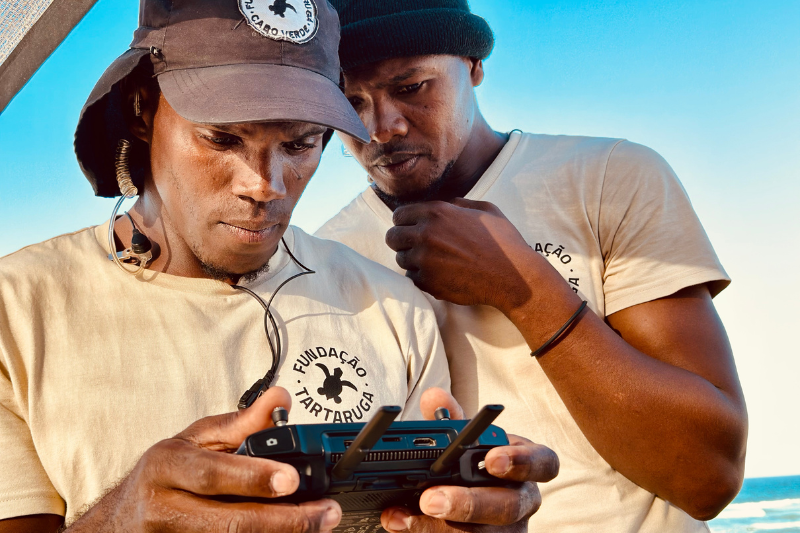
Members of the Dog and Drone Team operating the drone
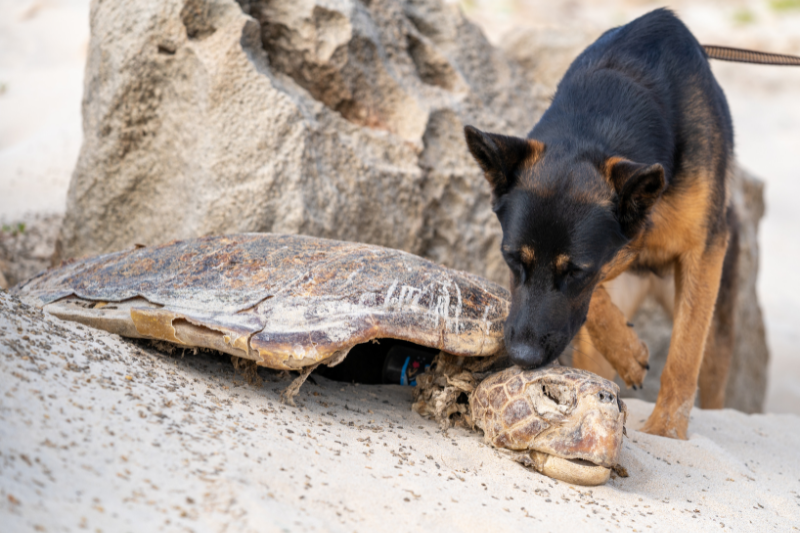
Conservation dog Karetta detecting a dead sea turtle
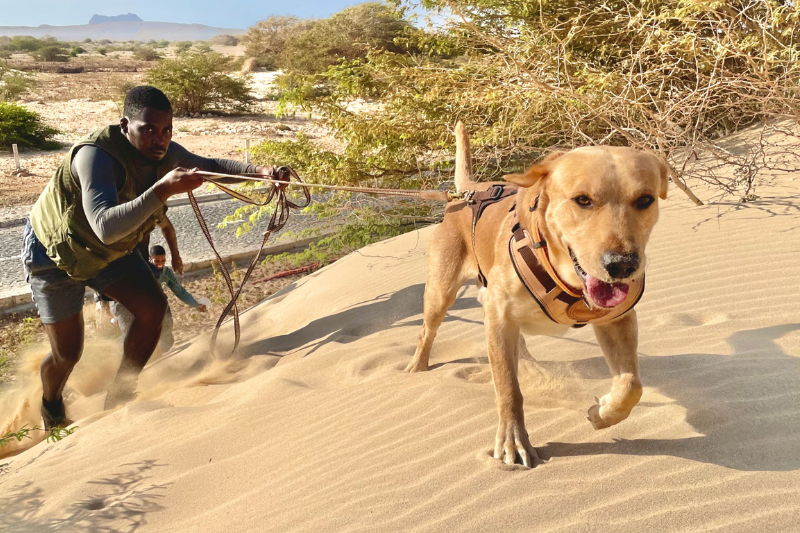
Conservation dog Kelo at work on Boa Vista
Community engagement: more than active turtle protection
In order to permanently end the illegal hunting of sea turtles on the beaches and in the sea, it is important to raise awareness of the issue among the local population and to jointly develop sustainable concepts to improve their living conditions.
Free swimming courses
In a survey on the island of Cape Verde, we found that only about 14% of children and young people can swim well enough to be safe in the sea. This alarming result made it clear to us that they often lacked the positive connection to the sea that would enable them to work for its protection. Our ambition to change this situation was born.
After training swimming instructors, we introduced a free children’s swimming course on Boa Vista in 2021 for the first time. Since then, we have awarded almost 300 children with swimming badges for completing courses at various levels of difficulty. In addition to traditional swimming and snorkelling lessons, the courses also include playful elements of marine environmental education that make the ocean habitat vivid and accessible.
Regular beach clean-ups
Boa Vista’s beaches suffer from a massive amount of rubbish. Washed up remnants of our civilisation that make it particularly difficult for the nesting females of the loggerhead turtle to come ashore and lay their eggs. For this reason, we organise large-scale beach clean-ups at regular intervals in cooperation with the local population and our team at Fundação Tartaruga.
But what happens to the rubbish washed up on the nesting beaches? Unfortunately, there is still no waste management concept on Boa Vista, so all the rubbish ends up unsorted on an open rubbish tip in the interior of the island. In order to at least set a symbolic example and draw attention to the problem, we have started a small recycling project in which we make reusable items from individual found objects.
Beautiful things from waste – upcycling centre Lixo Limpo
We are currently planning to open a small upcycling centre called ‘Lixo Limpo’ (Portuguese for ‘clean waste’) in the capital Sal Rei on Boa Vista. Here, we want to work with the local community to develop sustainable ideas and put them into practice in order to give a new purpose to various waste products, such as glass bottles that are often discarded in the countryside.
We have already purchased machines that can be used to make useful articles from plastic lids of collected drinking bottles, which unfortunately can be found in many places on the Cape Verde island. In the first step, the lids have to be crushed or shredded. Then the resulting granulate is melted down and pressed into individual shapes. We sell the newly created turtle key rings via our webshop. We are currently developing the production of further upcycling products, for example to give the island’s glass bottles, which are often disposed of in nature, a second purpose. Now is the time to give other upcycling ideas a suitable space!
Gender equality in sea turtle conservation
Equal opportunities in species conservation – we have dedicated ourselves to precisely this topic for a period of 12 months with a project that is unique to us to date. Under the somewhat unwieldy English working title ‘Empowering women and youth through knowledge exchange and capacity building in turtle conservation’, we invited young Cape Verdean female students to spend two months in our project area on Boa Vista in 2023. The aim was to create valuable synergies side by side with teams of rangers, field coordinators and international volunteers. In the course of this, a total of 10 students from different disciplines presented content from university teaching. In return, they gained practical insights into the work of Fundação Tartaruga on the nesting beaches of the loggerhead sea turtle.
As we are convinced of the positive effect for the participants, we would like to organise future projects that strengthen the role of women in science. Perhaps we will be able to organise a similar project again at a later date.
Joint projects with other NGOs
As part of a multi-year project called Projeto Tartaruga Boa Vista, we implemented various other projects to support the island’s population in partnership with the two other conservation organisations on Boa Vista, Cabo Verde Natura 2000 and BIOS.CV from 2017 to 2022.
Women’s cooperative TAMBRA
In the village of João Galego, a women’s cooperative called TAMBRA has been set up. The background is that women are also part of the illegal trade in turtle meat on Boa Vista, as it is usually women who preserve and sell the meat. By providing guidance on how to produce and market preserved vegetable chutneys and natural soaps, we offered the women of TAMBRA a sustainable alternative to being involved in turtle poaching. Currently, we are still supporting TAMBRA in the marketing of the soaps produced there, which we sell through our webshop.
Atelier Tarafes
Sewing for self-determined, independent sources of income: Since 2018, we support a women’s group in the village of Cabeça dos Tarafes with sewing courses and appropriate technical equipment. This made it possible for the women of Atelier Tarafes to accept orders from the local population, making them independent of tourism. In the past, school uniforms, work clothes and breathing masks have been made for public clients such as institutions or the local government. We have also financed another course by a professional ladies’ tailor for the now successful sewing studio. With this support, orders for wedding or evening wear can now also be accepted.
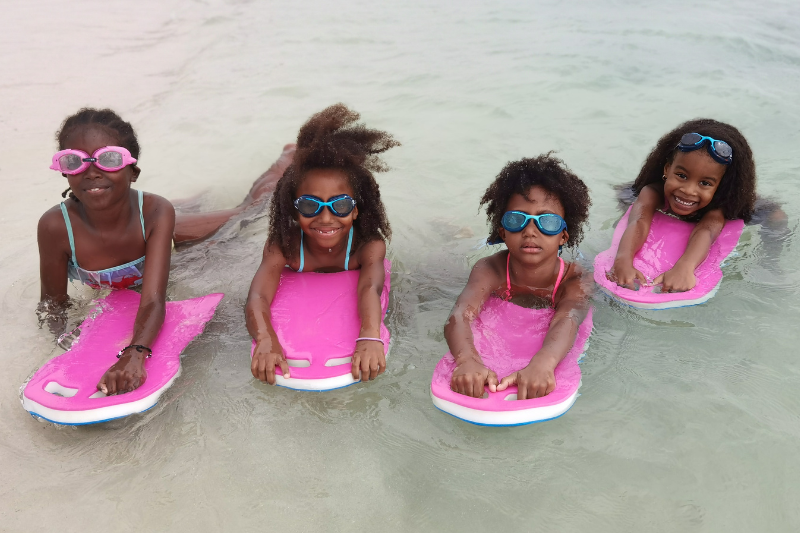
Children of Boa Vista at their swimming course
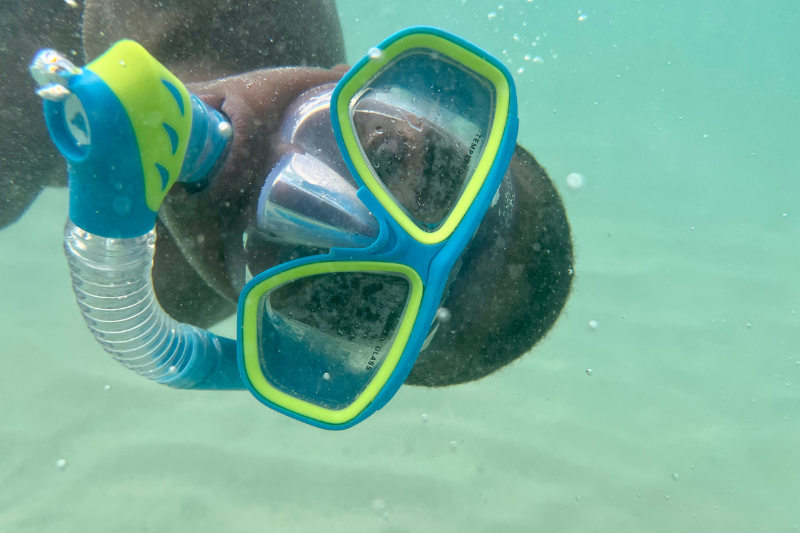
Young participant at free snorkelling course on Boa Vista
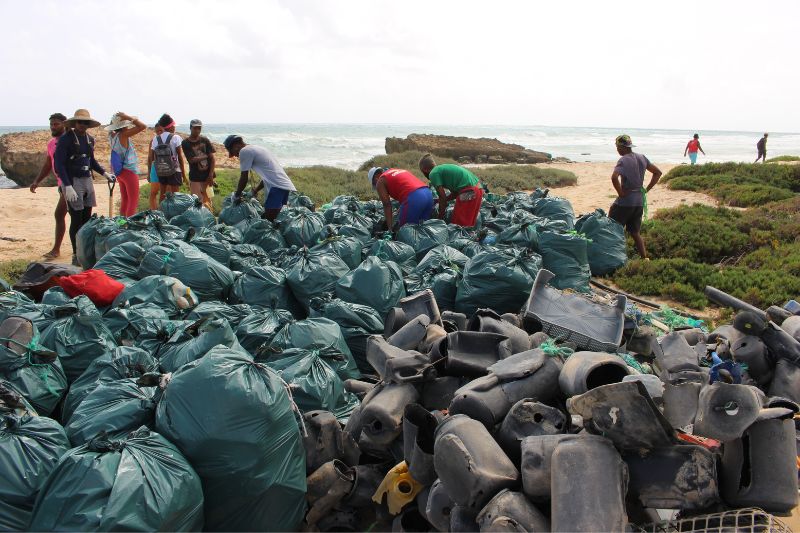
Beach clean-up at Cruz Morto, Boa Vista
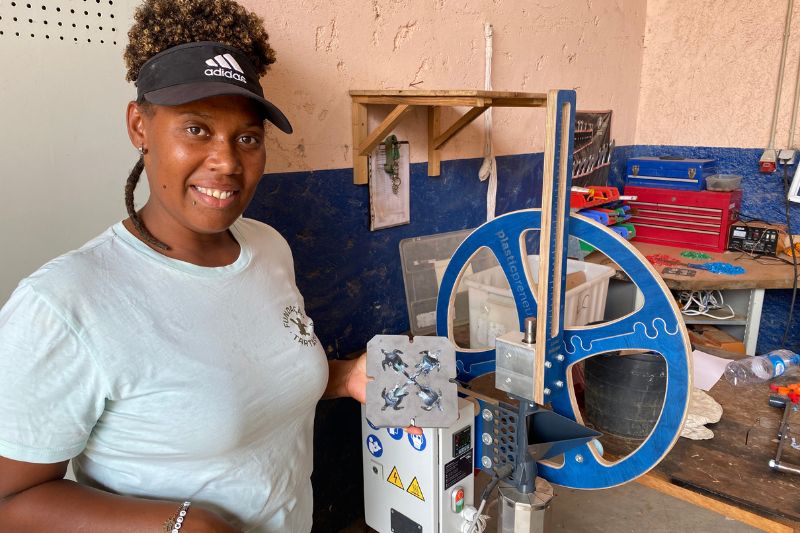
Plastic recycling machine for PET lids
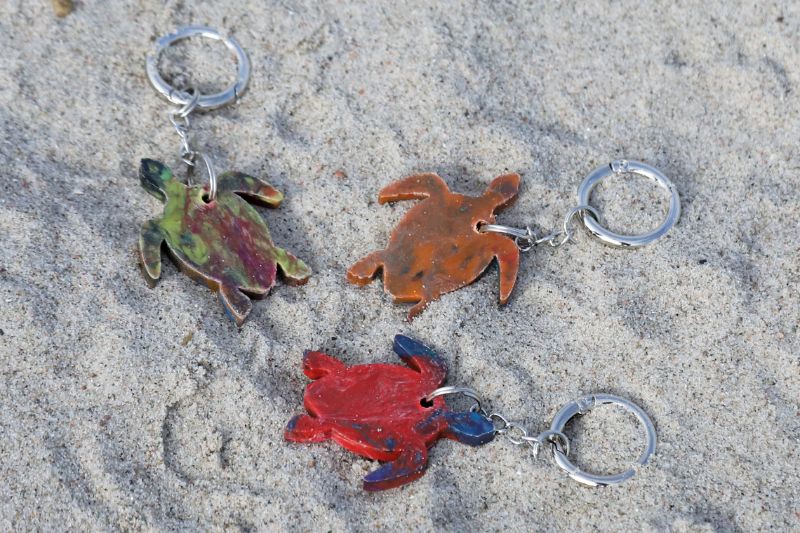
Upcycled keychains from PET bottle lids
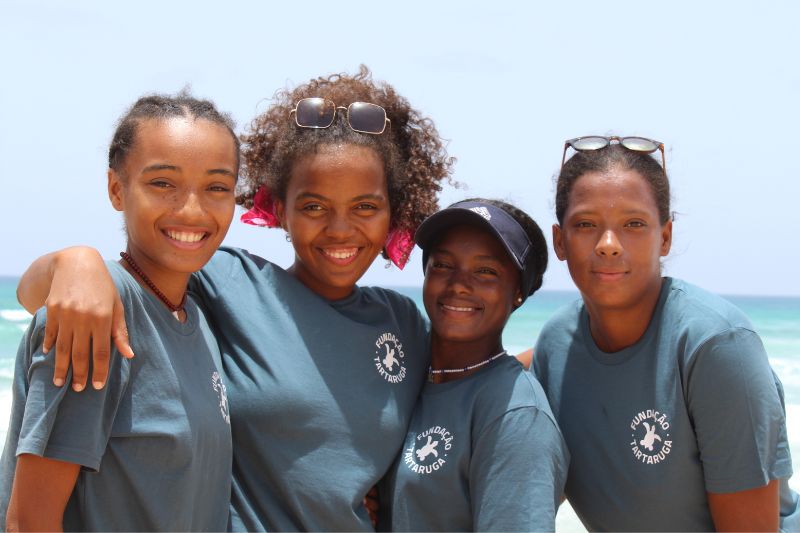
Young female participants of the “Women in Conservation” program on Boa Vista
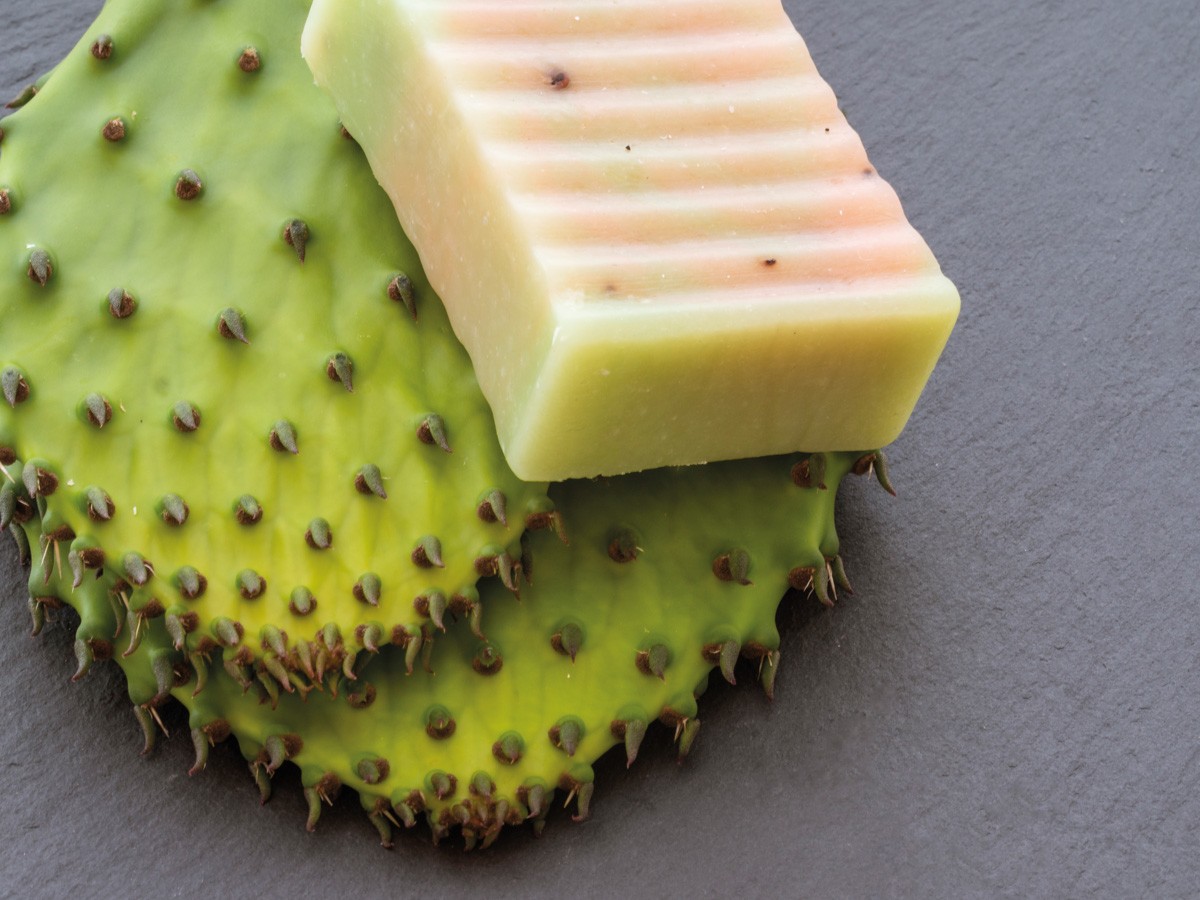
Selfmade soap from the cooperative TAMBRA
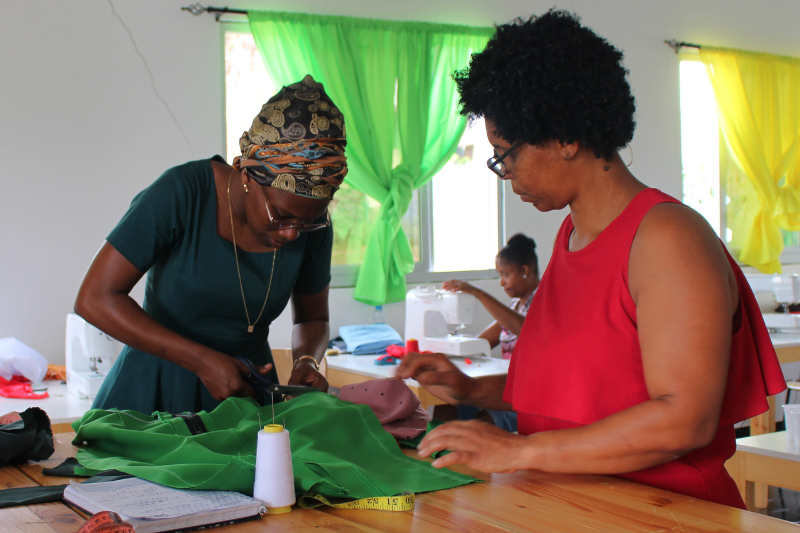
Sewers at Atelier Tarafes
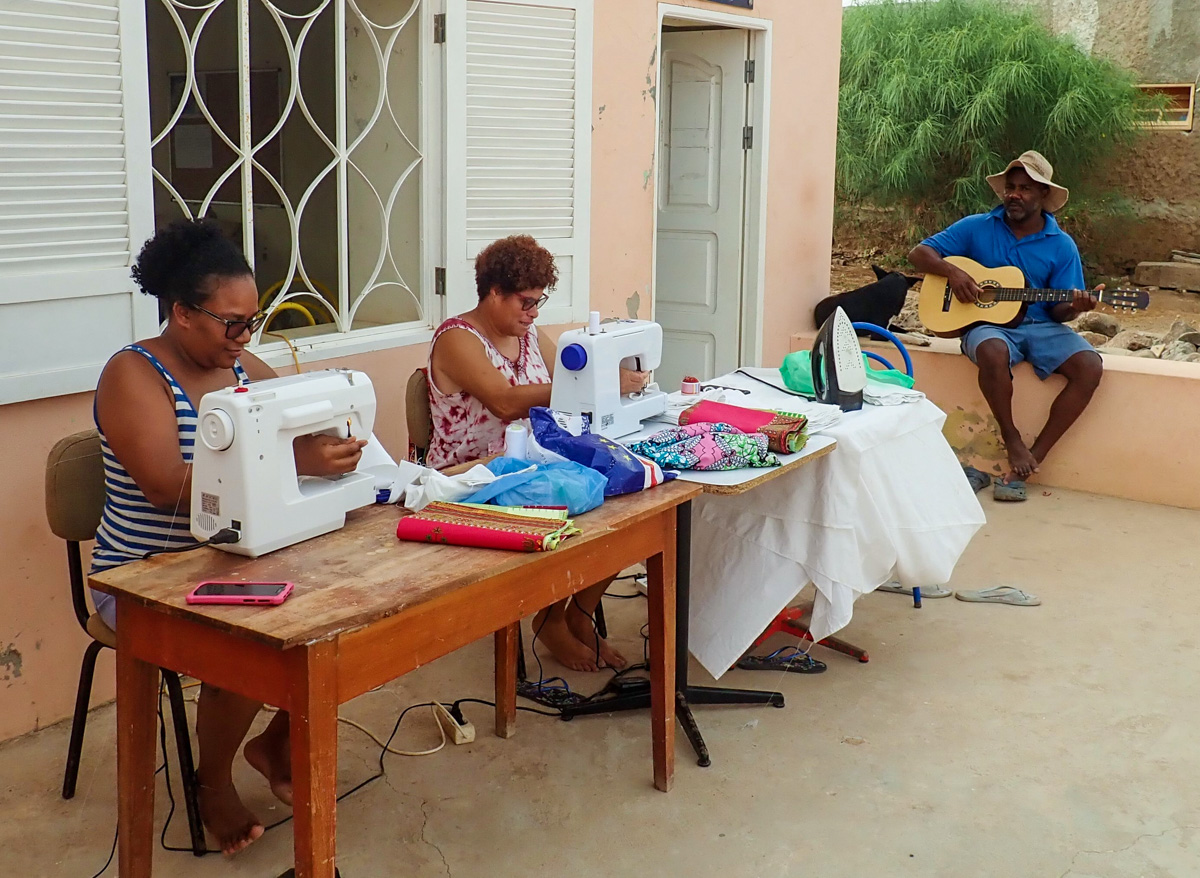
Sewing group in Cabeçã dos Tarafes
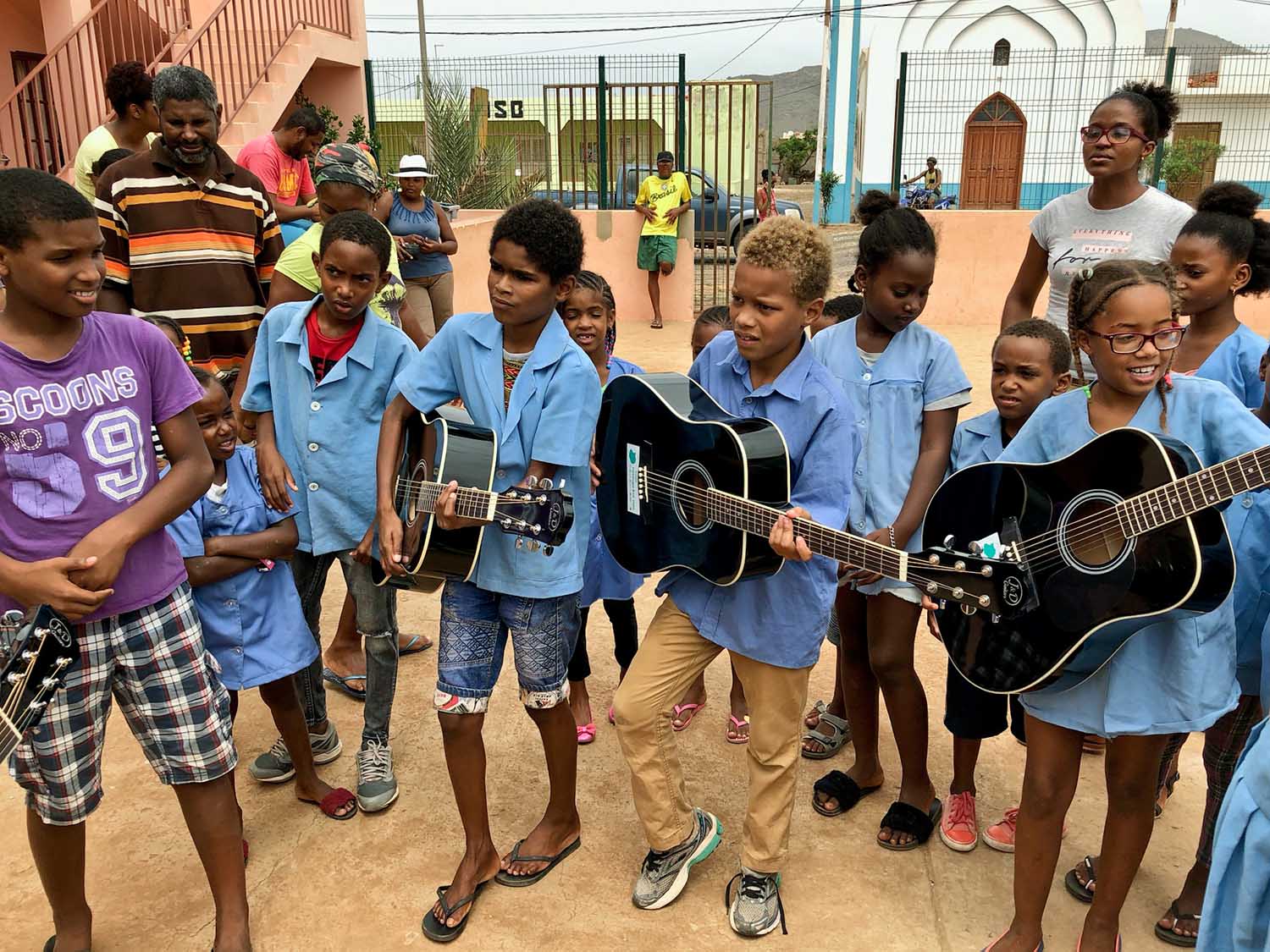
Education through music: guitars for the local school
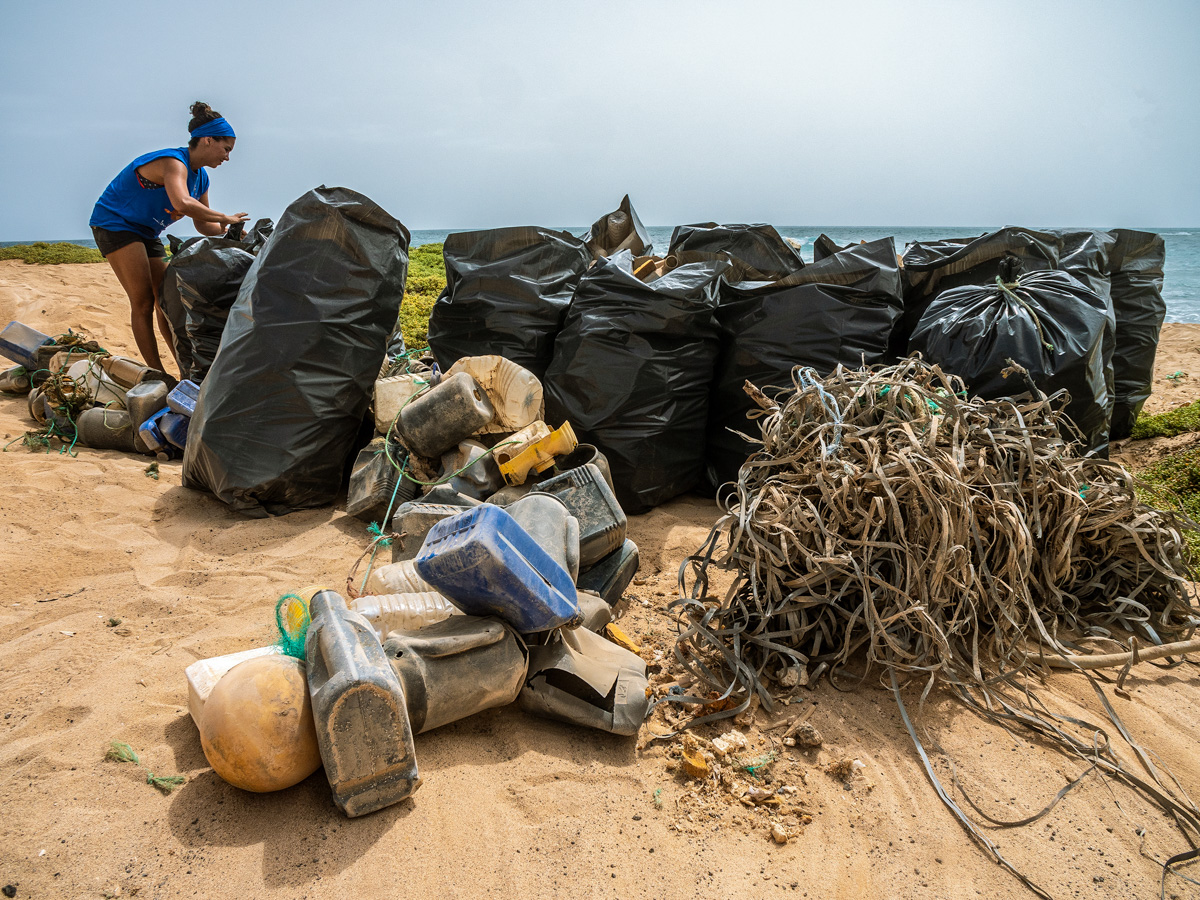
A stretch of beach is cleared of plastic waste





